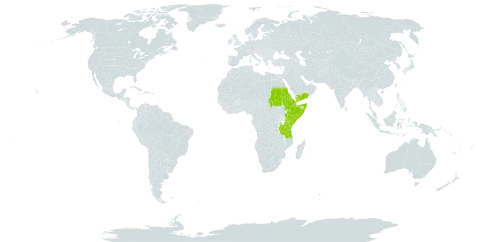A suberect procumbent or prostrate grey-green densely stellate-tomentose? annual herb up to 30 cm. high; branches up to 60 cm. long.. Leaves opposite or apparently verticillate, petiolate, 7–34 mm. long (including petiole 1–10 mm.) 6–24 mm. broad; blade broadly obovate or suborbicular, with the veins prominent below, entire or slightly wavy at the margin, rounded or occasionally subapiculate at apex.. Flowers axillary, 1–4 per node, yellow, subsessile.. Sepals 5, the outer very broadly ovate and plane, the inner conduplicate.. Staminodes 9–18 (in flowers dissected) yellow, petaloid, fimbriate at the apex; stamens many (12–30 in flowers dissected).. Carpels 5.. Seeds granular, with a long filiform strophiolar appendage.. Fig. 5/10–11, p. 14.
